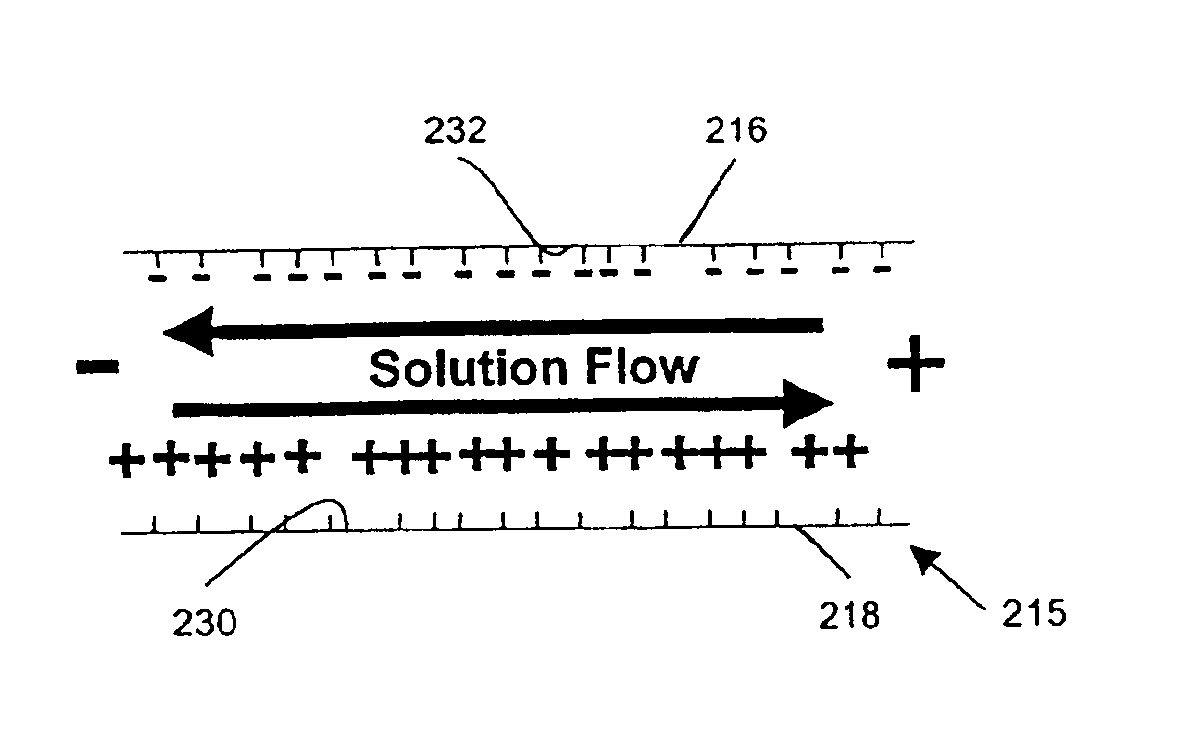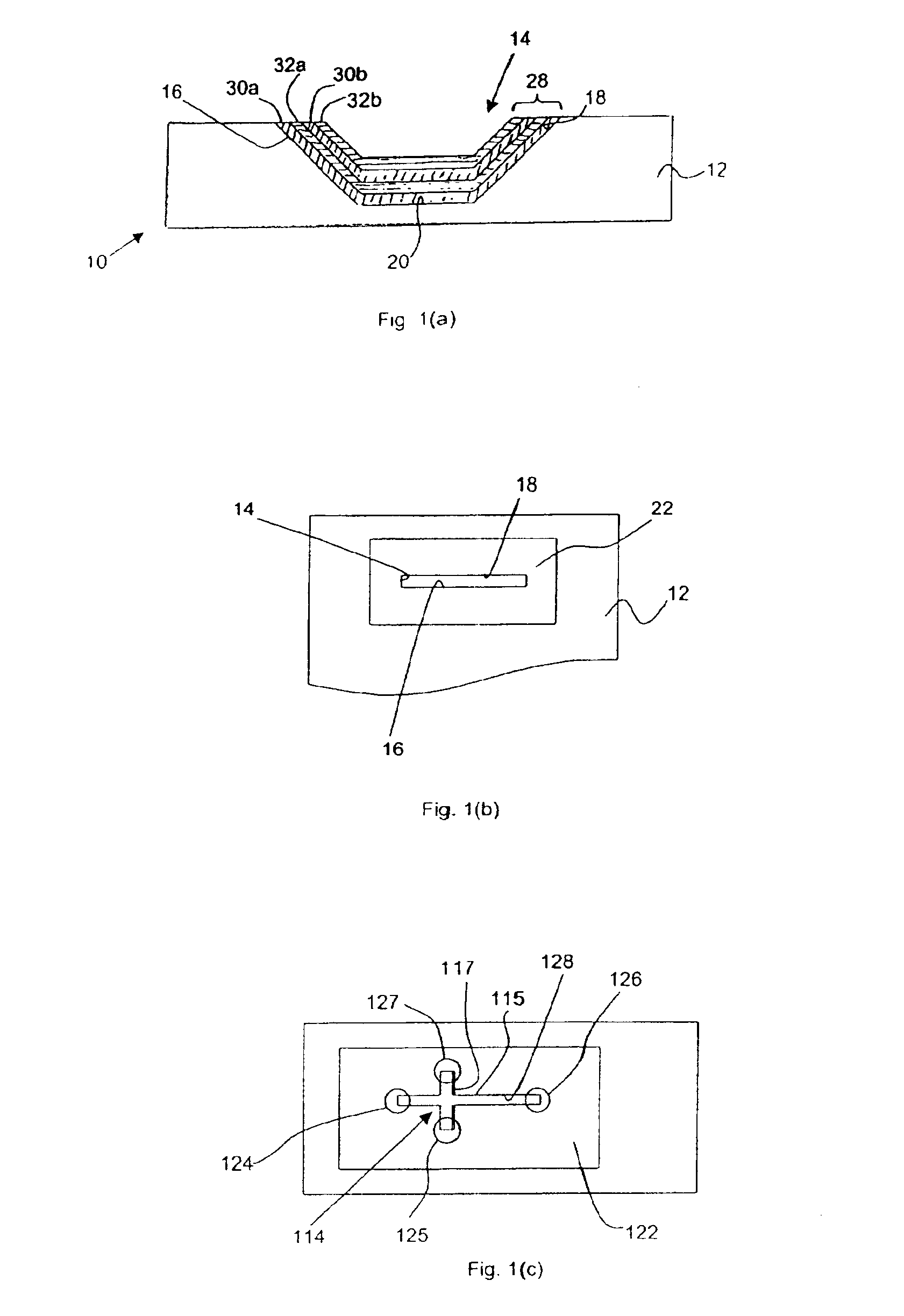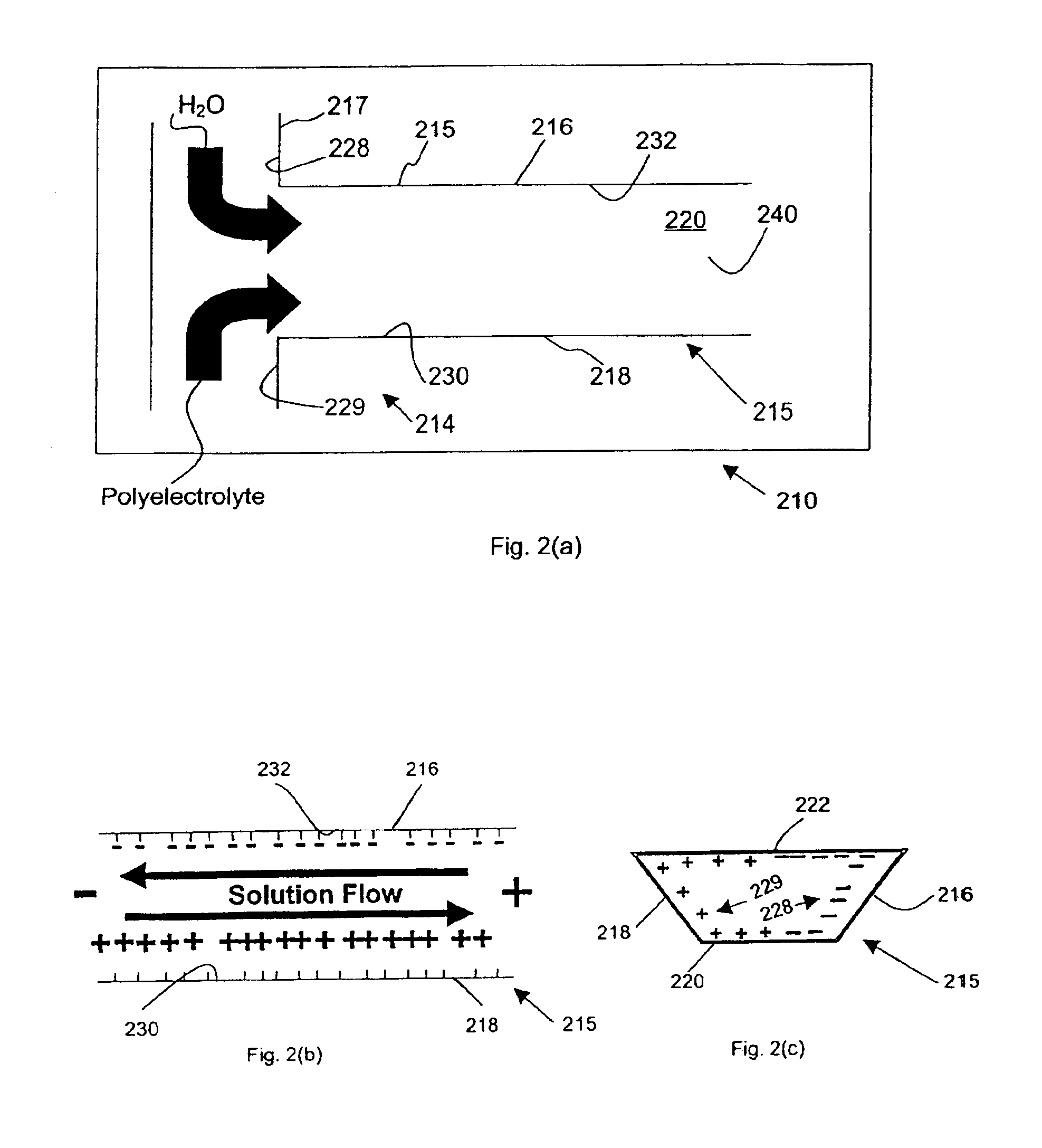Polyelectrolyte derivatization of microfluidic devices
a microfluidic device and polyelectrolyte technology, applied in the direction of fluid pressure measurement, liquid/fluent solid measurement, peptide measurement, etc., can solve problems such as complex flow patterns, and achieve the effect of enhancing the biocompatibility of plastic microchannels and derivatizing the wettability of microchannels
- Summary
- Abstract
- Description
- Claims
- Application Information
AI Technical Summary
Benefits of technology
Problems solved by technology
Method used
Image
Examples
Embodiment Construction
Referring now to the figures, and in particular, to FIGS. 1(a) and 1(b), microfluidic device 10 comprises a plastic substrate 12. The plastic substrate 12 may be composed of any suitable plastic or polymer material which includes but is not limited to polystyrene (PS), poly(ethylene terephthalate glycol) (PETG), poly(methyl methacrylate) (PMMA), and polycarbonate (PC).
A microchannel 14 formed in substrate 12 has a trapezoidal cross-section defined by slanted sidewalls 16, 18. Alternatively, the side wall surfaces of the microchannel 14 could be substantially perpendicular to a bottom surface 20. Alternatively, the microchannel could have sloped side walls, straight side walls without a well defined floor (V groove) or curved, semicircular side walls forming a “U-shaped” groove, or any other configuration with a channel that has one or more spatial dimensions in the micrometer size range. The depth of microchannel 14 is between 0.05 and 1000 μm and optimally between 1 and 100 μm. The...
PUM
| Property | Measurement | Unit |
|---|---|---|
| depth | aaaaa | aaaaa |
| depth | aaaaa | aaaaa |
| depth | aaaaa | aaaaa |
Abstract
Description
Claims
Application Information
 Login to View More
Login to View More - R&D
- Intellectual Property
- Life Sciences
- Materials
- Tech Scout
- Unparalleled Data Quality
- Higher Quality Content
- 60% Fewer Hallucinations
Browse by: Latest US Patents, China's latest patents, Technical Efficacy Thesaurus, Application Domain, Technology Topic, Popular Technical Reports.
© 2025 PatSnap. All rights reserved.Legal|Privacy policy|Modern Slavery Act Transparency Statement|Sitemap|About US| Contact US: help@patsnap.com



